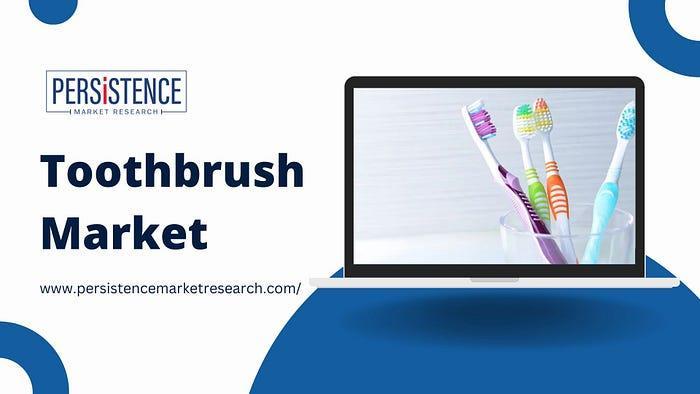Consumer Preferences in the Toothbrush Market

The toothbrush market has seen significant evolution over the years, driven by shifting consumer preferences, technological advancements, and a growing awareness of oral hygiene. As consumers become more conscious of their health and well-being, their choices in oral care products, including toothbrushes, have become more sophisticated.
The global toothbrush market was valued at US$ 6.9 billion in 2022 and is forecasted to expand at a CAGR of 4.3% to reach a market valuation of US$ 10.6 billion by end of 2032. According to this new study by Persistence Market Research, North America is the leading regional market with a share of 35.4% in 2022.
��������������������������������-https://www.persistencemarketresearch.com/samples/33311
This blog explores the key consumer preferences that are shaping the future of the toothbrush market.
1. Sustainability: A Growing Concern
One of the most significant trends influencing consumer preferences in the toothbrush market is sustainability. Consumers are increasingly opting for eco-friendly toothbrushes made from biodegradable materials such as bamboo. The reduction of plastic waste has become a priority for many, leading to a surge in demand for toothbrushes that have minimal environmental impact. Brands that align with this eco-conscious mindset are gaining popularity and trust among consumers.
2. Technological Advancements: The Rise of Smart Toothbrushes
The integration of technology into daily routines has not spared the toothbrush market. Smart toothbrushes, equipped with sensors and connectivity features, are becoming increasingly popular. These devices offer real-time feedback on brushing habits, ensuring that users maintain optimal oral hygiene. Consumers, especially those in younger demographics, are drawn to the idea of personalized dental care supported by technology.
3. Design and Aesthetics: Functionality Meets Style
Design and aesthetics have always played a role in consumer choices, but they are now more prominent than ever. Consumers are looking for toothbrushes that not only perform well but also look good on their bathroom counters. Sleek, minimalist designs with ergonomic handles are in demand, appealing to the modern consumer who values both form and function. The availability of various color options and customizable features adds to the appeal.
4. Health and Safety: Antibacterial and Soft Bristles
Health-conscious consumers are increasingly opting for toothbrushes with antibacterial properties and soft bristles. The importance of avoiding gum damage and maintaining oral health is leading to a preference for products that offer gentler cleaning options. Toothbrushes with replaceable heads and those designed for sensitive teeth and gums are particularly popular among those who prioritize health and safety.
5. Affordability and Value for Money
While premium features and eco-friendly materials are appealing, affordability remains a crucial factor for many consumers. The toothbrush market is witnessing a growing demand for products that offer the best value for money. Consumers are comparing features, durability, and price points to make informed purchasing decisions. Brands that can strike the right balance between quality and cost are more likely to succeed in this competitive market.
6. Personalization: Tailored to Individual Needs
Personalization is a trend that has permeated various industries, and the toothbrush market is no exception. Consumers are increasingly seeking products that cater to their specific oral care needs. Whether it’s a toothbrush designed for whitening, sensitivity, or orthodontic care, the demand for tailored solutions is on the rise. Brands that offer a wide range of options to address different dental concerns are gaining a competitive edge.
7. Convenience and Accessibility
In today’s fast-paced world, convenience is key. Consumers are looking for toothbrushes that are easy to use, maintain, and replace. Subscription services that deliver toothbrushes and replacement heads to the doorstep are becoming increasingly popular. Additionally, travel-friendly designs and compact packaging appeal to consumers who are always on the go.
Conclusion
The toothbrush market is undergoing a transformation as consumer preferences evolve. Sustainability, technological innovation, design, health-consciousness, affordability, personalization, and convenience are the driving forces behind this change. Brands that can adapt to these preferences and offer products
that meet the diverse needs of modern consumers are likely to thrive in this dynamic market. As consumer awareness and expectations continue to grow, the toothbrush market will undoubtedly see further innovation and diversification in the years to come.
